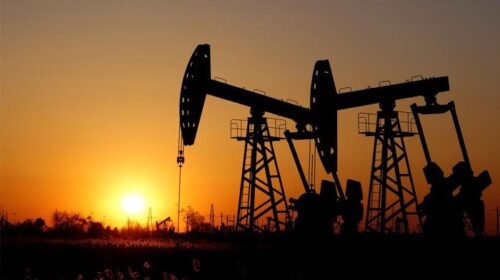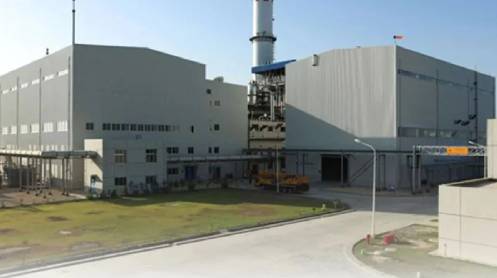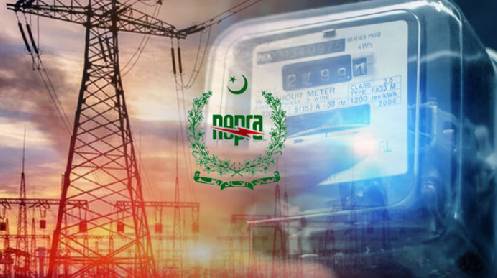Pakistan is considering amending its petroleum policy to offer more incentives to foreign local oil and gas exploration and production firms as a number of them have pulled up their stakes from the country over last several years, negatively impacting energy sector, The News has learnt.
To this effect, the Cabinet Committee on Energy (CCoE) that met under the chair of Federal Minister for Planning, Development, & Special Initiatives Asad Umar, formed a special purpose committee to review oil and gas exploration status and analyse the amendments required in the petroleum policy to enhance the exploration and production (E&P) activity in the country.
Federal Minister for Energy Hammad Azhar will head the committee comprising Federal Minister for Science &Technology Shibli Faraz, Member Energy, Secretary Power, and Secretary Petroleum Division.
Changes were made in the new E&P policy draft, including cutting the period of exploration licence from nine years to seven years and reducing appraisal of renewal period from two to one year. Apart from this, a better gas price has been given to E&P companies in order to attract more investment.
The base price for crude oil and condensate has been increased from $30/barrel to $40/barrel. Each calendar year, the base price will escalate by $0.5/barrel. Similarly, the windfall levy was also reduced from 50 percent to 40 percent.
It is to be noted that over the last several years, the E&P activities in Pakistan have significantly reduced, and several companies have left the country, resulting in the increased requirement for more foreign oil and gas imports.
The committee also discussed the Draft Model Petroleum Sharing Agreement as per Pakistan Petroleum Exploration and Production 2012, which was approved by the Council of Common Interests (CCI). This draft agreement will facilitate the offshore exploration of oil and gas in the country. The government has sent the draft to the Law Division, which will review it.
The CCOE also reviewed the circular debt situation and power sector performance during January 2022. Power Division also explained the changes in the merit order dispatch of power plants, because of transmission constraints and limited gas supply during January 2022.
The Petroleum Division says there is huge potential for oil and gas exploration and production. Vast areas in the province of Balochistan, Punjab, and Khyber Pakhtunkhwa remain unexplored, it adds.
It is to be noted that around two dozen local and foreign E&P companies were operating in the country, but now some of them have abandoned their activities.
Now the government is working on a plan to facilitate them for exploring more resources to reduce dependence on imports.
MOL is the largest private and second-largest oil-producing company in the country with a production share of 24 percent. Pakistan Petroleum is the second-highest gas producing company in the country with a 19.3 percent production share.
Out of the total sedimentary area of 0.827 million square kilometers, only 0.225 million square kilometers are under exploration. Out of 1,150 exploratory wells, so far been drilled since the inception of exploratory activities, 400 discoveries proved successful -a success ratio of 1:3.
Of the 6 billion cubic feet per day gas demand, 3.2 bcfd is being provided by local sources, and same as against the local demand of petroleum products of around 0.45 million barrels per day, only 75 to 80 thousand barrels are being locally produced.
To this effect, the Cabinet Committee on Energy (CCoE) that met under the chair of Federal Minister for Planning, Development, & Special Initiatives Asad Umar, formed a special purpose committee to review oil and gas exploration status and analyse the amendments required in the petroleum policy to enhance the exploration and production (E&P) activity in the country.
Federal Minister for Energy Hammad Azhar will head the committee comprising Federal Minister for Science &Technology Shibli Faraz, Member Energy, Secretary Power, and Secretary Petroleum Division.
Changes were made in the new E&P policy draft, including cutting the period of exploration licence from nine years to seven years and reducing appraisal of renewal period from two to one year. Apart from this, a better gas price has been given to E&P companies in order to attract more investment.
The base price for crude oil and condensate has been increased from $30/barrel to $40/barrel. Each calendar year, the base price will escalate by $0.5/barrel. Similarly, the windfall levy was also reduced from 50 percent to 40 percent.
It is to be noted that over the last several years, the E&P activities in Pakistan have significantly reduced, and several companies have left the country, resulting in the increased requirement for more foreign oil and gas imports.
The committee also discussed the Draft Model Petroleum Sharing Agreement as per Pakistan Petroleum Exploration and Production 2012, which was approved by the Council of Common Interests (CCI). This draft agreement will facilitate the offshore exploration of oil and gas in the country. The government has sent the draft to the Law Division, which will review it.
The CCOE also reviewed the circular debt situation and power sector performance during January 2022. Power Division also explained the changes in the merit order dispatch of power plants, because of transmission constraints and limited gas supply during January 2022.
The Petroleum Division says there is huge potential for oil and gas exploration and production. Vast areas in the province of Balochistan, Punjab, and Khyber Pakhtunkhwa remain unexplored, it adds.
It is to be noted that around two dozen local and foreign E&P companies were operating in the country, but now some of them have abandoned their activities.
Now the government is working on a plan to facilitate them for exploring more resources to reduce dependence on imports.
MOL is the largest private and second-largest oil-producing company in the country with a production share of 24 percent. Pakistan Petroleum is the second-highest gas producing company in the country with a 19.3 percent production share.
Out of the total sedimentary area of 0.827 million square kilometers, only 0.225 million square kilometers are under exploration. Out of 1,150 exploratory wells, so far been drilled since the inception of exploratory activities, 400 discoveries proved successful -a success ratio of 1:3.
Of the 6 billion cubic feet per day gas demand, 3.2 bcfd is being provided by local sources, and same as against the local demand of petroleum products of around 0.45 million barrels per day, only 75 to 80 thousand barrels are being locally produced.





